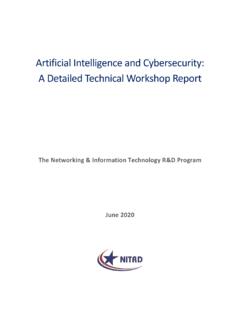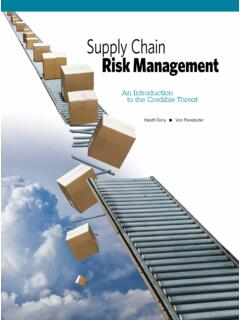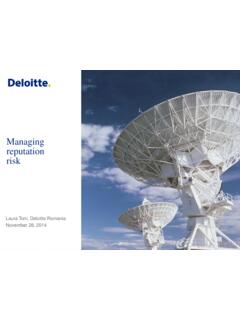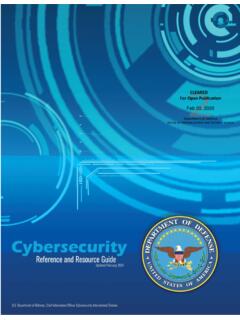Transcription of AI and Cybersecurity: Opportunities and Challenges
1 \ ARTIFICI AL INTELLIGENCE AND CYBERSE CURITY: Opportunities AND CHA LLENGES T E C H N I C A L W O R K S H O P S U M M A R Y R E P O R T A r e p o r t b y t h e N E T W O R K I N G & I N F O R M AT I O N T E C H N O L O G Y R E S E A R C H A N D D E V E L O PM E N T S U B C O M M I T T E E an d t h e M A C H I N E L E A R N I N G & AR T I F I C I A L I N T E L L I G E N C E S U B C O M MI T T E E o f t h e N A T I O N A L S C I E N C E & TE C H N O L O G Y C O U N C I L M A R C H 2020AI and cybersecurity : Opportunities and Challenges About the National Science and Technology Council The National Science and Technology Council (NSTC) is the principal means by which the Executive Branch coordinates science and technology policy across the diverse entities that make up the Federal research and development enterprise. A primary objective of the NSTC is to ensure science and technology policy decisions and programs are consistent with the President's stated goals.
2 The NSTC prepares research and development strategies that are coordinated across Federal agencies aimed at accomplishing multiple national goals. The work of the NSTC is organized under committees that oversee subcommittees and working groups focused on different aspects of science and technology. More information is available at About the Office of Science and Technology Policy The Office of Science and Technology Policy (OSTP) was established by the National Science and Technology Policy, Organization, and Priorities Act of 1976 to provide the President and others within the Executive Office of the President with advice on the scientific, engineering, and technological aspects of the economy, national security, homeland security, health, foreign relations, the environment, and the technological recovery and use of resources, among other topics. OSTP leads interagency science and technology policy coordination efforts, assists the Office of Management and Budget with an annual review and analysis of Federal research and development in budgets, and serves as a source of scientific and technological analysis and judgment for the President with respect to major policies, plans, and programs of the Federal Government.
3 More information is available at About the Networking and Information Technology Research and Development Program The Networking and Information Technology Research and Development (NITRD) Program is the Nation s primary source of federally funded coordination of pioneering information technology (IT) research and development (R&D) in computing, networking, and software. The multiagency NITRD Program, guided by the NITRD Subcommittee of the NSTC Committee on Science and Technology Enterprise, seeks to provide the R&D foundations for ensuring continued technological leadership and meeting the Nation s needs for advanced IT. More information is available at About the Machine Learning and Artificial Intelligence Subcommittee The Machine Learning and Artificial Intelligence (MLAI) Subcommittee monitors the state of the art in machine learning (ML) and artificial intelligence (AI) within the Federal Government, in the private sector, and internationally to watch for the arrival of important technology milestones in the development of AI, to coordinate the use of and foster the sharing of knowledge and best practices about ML and AI by the Federal Government, and to consult in the development of Federal MLAI R&D priorities.
4 The MLAI Subcommittee reports to the NSTC Committee on Technology and the Select Committee on AI. About this Document On June 4-6, 2019, the NSTC NITRD Program, in collaboration with NSTC s MLAI Subcommittee, held a workshop to assess the research Challenges and Opportunities at the intersection of cybersecurity and artificial intelligence. The workshop brought together senior members of the government, academic, and industrial communities to discuss the current state of the art and future research needs, and to identify key research gaps. This report is a summary of those discussions, framed around research questions and possible topics for future research directions. More Information is available at Acknowledgements The National Science Technology Council s NITRD and MLAI Subcommittees gratefully acknowledge Patrick McDaniel, Pennsylvania State University; John Launchbury, Galois; Brad Martin, National Security Agency; Cliff Wang, Army Research Office; and Henry Kautz, National Science Foundation who helped plan and implement the workshop and write and review the report.
5 Also, we gratefully acknowledge the workshop participants for their contributions to the report. Copyright Information This document is a work of the United States Government and is in the public domain (see 17 105). Subject to the stipulations below, it may be distributed and copied with acknowledgment to OSTP. Requests to use any images must be made to OSTP if no provider is identified. Published in the United States of America, 2020. AI and cybersecurity : Opportunities and Challenges i Table of Contents Executive Summary .. ii Abbreviations .. iii Introduction .. 1 Security of AI .. 1 Specification and Verification of AI Systems .. 1 Trustworthy AI Decision Making .. 2 Detection and Mitigation of Adversarial 3 Engineering Trustworthy AI-Augmented Systems .. 4 AI for cybersecurity .. 5 Enhancing the Trustworthiness of Systems .. 5 Autonomous and Semiautonomous cybersecurity .. 6 Autonomous Cyber Defense .. 7 Predictive Analytics for Security.
6 8 Applications of Game Theory .. 8 Human-AI 9 Science and Engineering Community Needs .. 10 Research Testbeds, Datasets, and Tools .. 10 Education, Job Training, and Public Outreach .. 10 Conclusion .. 10 AI and cybersecurity : Opportunities and Challenges ii Executive Summary On June 4-6, 2019, the National Science and Technology Council Subcommittees on Networking and Information Technology Research and Development, and Machine Learning and Artificial Intelligence held a workshop1 to assess the research Challenges and Opportunities at the intersection of cybersecurity and artificial intelligence (AI). This document summarizes the workshop discussions. Technology is at an inflection point in history. AI and machine learning (ML) are advancing faster than society s ability to absorb and understand them; at the same time, computing systems that employ AI and ML are becoming more pervasive and critical.
7 These new capabilities can make the world safer and more affordable, just, and environmentally sound; conversely, they introduce security Challenges that could imperil public and private life. Though often used interchangeably, the terms AI and ML refer to two interrelated concepts. Coined in the 1950s, AI is the field of computer science that refers to programs intended to model intelligence . In practice, this refers to algorithms that can reason or learn given the necessary inputs and base knowledge and are used for tasks such as planning, recognition, and autonomous decision-making ( , weather prediction). ML is a specialized branch of AI that uses algorithms to understand models of phenomena from examples ( , statistical machine learning) or experience ( , reinforcement learning). Throughout this document the term AI will be used to discuss topics that apply to the broad field, and ML will be used when discussing topics specific to machine learning.
8 The Challenges are manifold. AI systems need to be secure, which includes understanding what it means for them to be secure. Additionally, AI techniques could change the current asymmetric defender-versus-adversary balance in cybersecurity . The speed and accuracy of these advances will enable systems to act autonomously, to react and defend at wire speed,2 and to detect overt and covert adversarial reconnaissance and attacks. Therefore, securing the Nation s future requires substantial research investment in both AI and cybersecurity . AI investments must advance the theory and practice of secure AI-enabled system construction and deployment. Considerable efforts in managing AI are needed to produce secure training; defend models from adversarial inputs and reconnaissance; and verify model robustness, fairness, and privacy. This includes secure AI-based decision-making and methods for the trustworthy use of AI-human systems and environments.
9 This will require a science, practice, and engineering discipline for the integration of AI into computational and cyber-physical systems that includes the collection and distribution of an AI corpus including systems, models and datasets for education, research, and validation. For cybersecurity , research investments must apply AI-systems within critical infrastructure to help resolve persistent cybersecurity Challenges . Current techniques include network monitoring for detecting anomalies, software analysis techniques to identify vulnerabilities in code, and cyber-reasoning systems to synthesize defensive patches at the first indication of an attack. AI systems can perform these analyses in seconds instead of days or weeks; in principle, cyber-attacks could be observed and defended against as they occur. However, safe deployment will require understanding the multiple dimensions and implications of these AI actions.
10 1 2 Wire speed is the rate of data transfer that a telecommunication technology provides at the physical level (hardware wire, box, or function) and that supports the data transfer rate without slowing it down. AI and cybersecurity : Opportunities and Challenges iii Abbreviations AI artificial intelligence IT information technology ML machine learning MLAI Machine Learning and Artificial Intelligence Subcommittee (Subcommittee of the NSTC) NITRD Networking and Information Technology Research and Development (Program or Subcommittee of the NSTC) NSTC National Science and Technology Council OSTP Office of Science and Technology Policy AI and cybersecurity : Opportunities and Challenges 1 Introduction The National Science and Technology Council (NSTC) Networking and Information Technology Research and Development (NITRD) Subcommittee and the NSTC Machine Learning and Artificial Intelligence (MLAI) Subcommittee, held a workshop to assess the research Challenges and Opportunities at the intersection of cybersecurity and artificial intelligence (AI).









